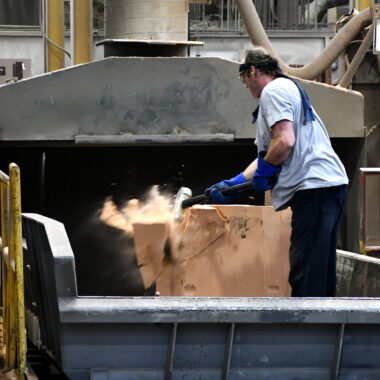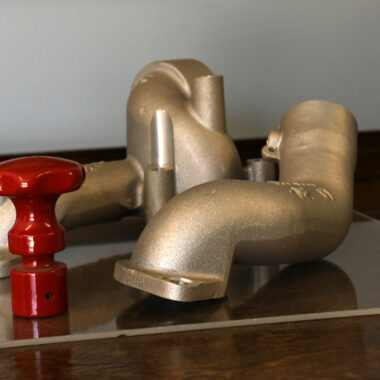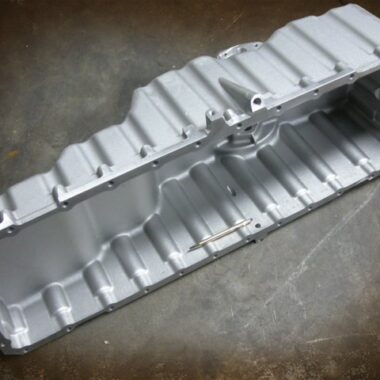Unraveling About Aluminum Casting: From Basics to Expertise
Unraveling About Aluminum Casting: From Basics to Expertise
Blog Article
Crafting Excellence: Exactly How to Accomplish High-Quality Aluminum Castings Every Time
In the realm of aluminum spreading, the quest of excellence is a continual trip that requires a meticulous technique and an eager understanding of the ins and outs entailed. Achieving consistent premium aluminum castings requires a comprehensive understanding of the processes, from choosing the appropriate alloy to performing specific mold styles and diligently regulating casting specifications. Nevertheless, the real mastery hinges on the capability to implement these aspects flawlessly to create perfect spreadings every time. As we check out the details of crafting perfection in aluminum castings, uncovering the essential methods and strategies that lead to remarkable results ends up being paramount for those aiming for quality in this customized area.
Comprehending Light Weight Aluminum Spreading Processes
Aluminum casting procedures, crucial in the production market, involve the complex change of molten light weight aluminum right into solid forms via a series of carefully regulated steps. Understanding these procedures is critical to achieving high-quality light weight aluminum castings continually - about aluminum casting. The main methods utilized in aluminum casting are pass away casting, sand spreading, and investment spreading

Each of these processes has its benefits and is chosen based upon elements like intricacy, volume, and wanted surface of the light weight aluminum casting. about aluminum casting. Understanding the details of these techniques is crucial for makers aiming to generate premium aluminum castings constantly
Picking the Right Light Weight Aluminum Alloy
Picking the proper aluminum alloy is a crucial choice in the manufacturing of premium aluminum spreadings. When choosing a light weight aluminum alloy for spreading, it is important to consider the certain requirements of the application to make certain ideal performance.
Among the most generally used light weight aluminum alloys for casting is A356. This alloy offers exceptional castability, high strength, and great corrosion resistance, making it ideal for a variety of applications. 6061 aluminum alloy is favored for its premium weldability and good mechanical buildings. For applications requiring high stamina, 7075 light weight aluminum alloy is a popular option as a result of its extraordinary strength-to-weight proportion.
Along with mechanical properties, factors to consider such as price, availability, and post-casting procedures should additionally affect the selection of the right light weight aluminum alloy. By thoroughly examining these variables, suppliers can make certain the production of premium aluminum castings that fulfill the desired specs.
Carrying Out Appropriate Mold And Mildew Design
Developing an effective mold layout is vital for ensuring the effective manufacturing of high-grade aluminum castings. Proper mold and mildew layout plays a considerable duty in accomplishing the preferred qualities of the final item. To apply an effective mold design, elements such as product flow, cooling prices, and component geometry need to be very carefully thought about.
One trick facet of mold and mildew style is ensuring correct filling and solidification of the aluminum within the mold and mildew tooth cavity. This includes designing jogger and gating systems that assist in smooth metal circulation and prevent problems such as air entrapment or insufficient dental filling. Furthermore, integrating cooling networks into the mold and mildew design aids control solidification prices and decrease site here the danger of porosity or shrinkage issues.

Controlling Casting Parameters

Making Certain Post-Casting Quality Checks
To keep the high top quality of light weight aluminum spreadings, complete post-casting top quality checks are crucial. After the spreading procedure is completed, it is essential to guarantee that the final items satisfy the preferred requirements and specifications.
Dimensional accuracy is an additional important element that should be verified throughout post-casting high quality checks. Measurements of vital measurements and tolerances need to be required to confirm that the spreadings adapt the needed specs. Additionally, mechanical residential or commercial properties such as hardness, tensile toughness, and impact resistance might need to be evaluated via material screening to guarantee that the spreadings possess the essential Read Full Article stamina and resilience for their desired application.
Conclusion
To conclude, accomplishing high-quality light weight aluminum spreadings needs a comprehensive understanding of the spreading processes, More about the author choosing the appropriate alloy, creating mold and mildews efficiently, regulating casting specifications diligently, and carrying out post-casting high quality checks diligently. By adhering to these steps, manufacturers can continually produce light weight aluminum spreadings that meet the highest possible requirements of quality and efficiency.
Accomplishing consistent high-grade light weight aluminum spreadings requires a comprehensive understanding of the processes, from picking the suitable alloy to executing exact mold styles and meticulously regulating casting specifications. The primary approaches used in light weight aluminum casting are die spreading, sand casting, and financial investment casting.
Investment spreading, also recognized as precision casting, entails creating wax patterns that are covered in ceramic to create molds.Choosing the appropriate aluminum alloy is a critical decision in the manufacturing of top quality light weight aluminum spreadings.Ensuring exact control over spreading parameters is vital for keeping consistency and high quality in light weight aluminum spreading production.
Report this page